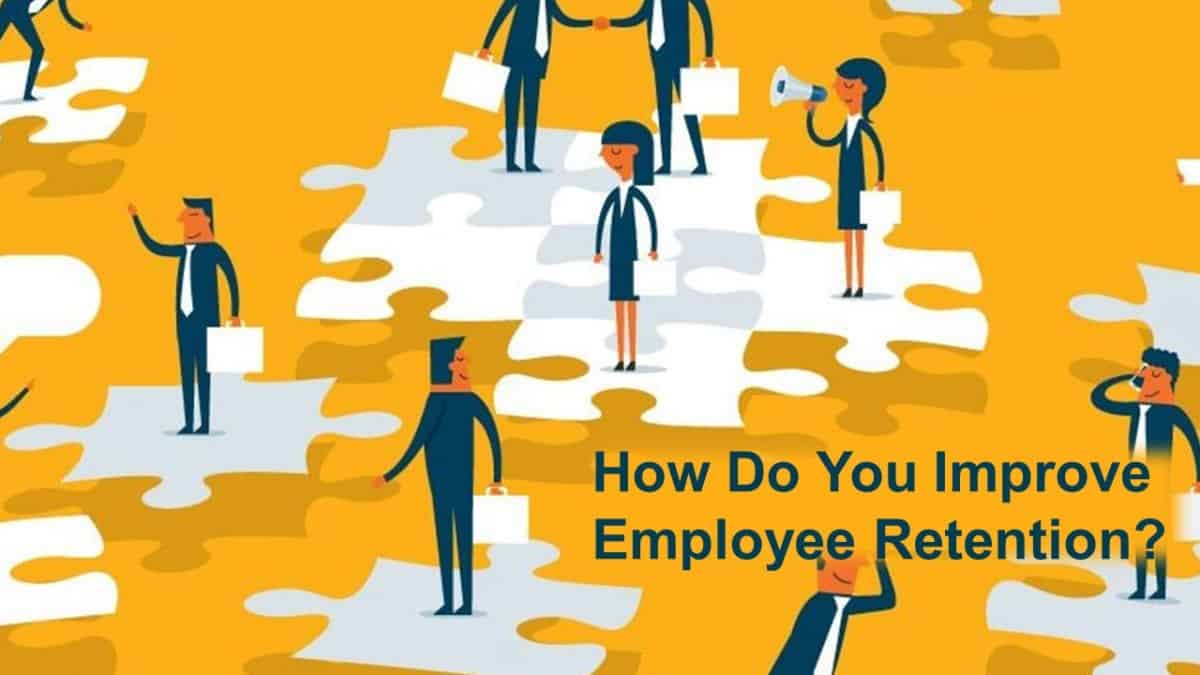Share:
Matthew Wride, Contributor

Ever since shopkeepers, farmers, and manufacturers hired their first laborers, keeping good employees on the payroll has been a challenge. It is axiomatic.
If an employee is driven, helpful, and talented, chances are others will want to hire that person too. Plus, capable employees have options: whether it is starting their own business, entering a new field, or partnering with the local competition.
Talent attracts suitors like moths to a flame. This can be challenging for organizations that want to hold on to their most talented employees.
If we want to improve retention, however, we need to first reframe our task. Organizations often talk about ways to improve retention. I prefer to frame our goal, however, as a fight instead of an initiative.
You improve employee retention by fighting attrition. We need to fight to keep our people, and we need to work hard to help employees engage in their jobs. When it comes to retaining good employees, a defensive mindset is better than an incentive/rewards approach because it fosters vigilance.
To help solve this challenge, this article offers three basic rules to improve employee retention in the era of “The Great Resignation” and “Quiet Quitting.”


A New Threat on the Horizon
In addition to the hurdles we face when employees leave, we now have another threat to worry about. It’s been labeled quiet quitting, and it is when an employee does the bare minimum just to collect a paycheck.
Technically speaking, “getting by” has been something managers have combated for hundreds of years, we simply have a new name for it, and that name has gone viral.
In many ways, quiet quitting is just pre-attrition; you get to deal with all the problems and the only difference is the paperwork has yet to be processed.
Although it is being portrayed as a victimless decision, quiet quitting hurts others. Minimum effort punishes other team members with extra work, workers who, for a variety of reasons, care more.
To fully appreciate quiet quitting’s danger, contrast it with employee engagement.
Employee engagement is an employee’s positive emotional response to their employee experience, and it is manifested by observable behaviors such as increased discretionary effort and motivation, improved KPIs, higher retention rates, and improved levels of satisfaction.
Attrition + Quiet Quitting is Painful
The downside to losing an employee, or having one that scarcely contributes, is significant.
Gallup estimates that, regrettably, attrition costs an employer between 1.5 to 2 times an employee’s salary. Such costs are even higher when a firm loses a top performer; it is painful to lose any employee, and it is doubly painful to lose a good one.
Furthermore, when it comes to quiet quitters, what is the point? They offer minimum value while sowing seeds of discontent in others.
While the financial costs are certainly real, I am not sure they represent the total loss. We overlook unquantifiable costs, which are even more significant.
Losing an employee, or having one that does nothing, means that vital institutional knowledge exits the building or is never deployed. Institutional knowledge is foundational to innovative work, and it takes years to acquire enough experience and perspective for it to be useful.
Game-changing advancements occur only when a contributor sees a different path forward. Yet, to find a different course, one must first intimately understand their current situation and why it needs to change. This is just one of many reasons institutional knowledge is so valuable.
So, when an employee turns in their key fob or shuts down the effort, they lock up crucial expertise that simply cannot be transferred to an incoming replacement. The clock resets, and the cycle starts over.
Who knows how many innovative ideas, inventions, or game-changing marketing campaigns have been lost because a future creator walks out the door or is too disengaged to care?
Three Rules to Fight Attrition
So, let us consider three simple rules to help us manage the fight against regrettable attrition and quiet quitting:
Rule #1: Never give an employee a reason to look elsewhere or to doubt why they should work hard.
Start with your basic employee hygiene factors. They must be above average.
For example, if your pay and benefits are middling at best, then employees will look elsewhere. No one wants to feel like they are on the losing side of a bargain.
This has always been the case when it comes to compensation. The better course is to remove the temptation to look elsewhere by ensuring that compensation and benefits are competitive, and if possible, above average.
Do the same exercise for other hygiene factors such as tools and resources, PTO, facilities, paid holidays, etc.
As for quiet quitting, never let things get out of balance. Consistently monitor burnout and work/life balance. Become invested in the well-being and total health of your employees.
An effective way to get a feel for the state of things is to build a robust employee listening program. Nowadays, there are a variety of ways to track how your employees are feeling and performing.
For example, quarterly employee net promoter (eNPS) surveys are a great technique to track workforce well-being.
Each quarter employees are asked two simple questions: (1) would you recommend our organization to others as a great place to work; and (2) tell us about your current experience.
With recent improvements in machine learning and natural language processing, this second question can yield a treasure trove of useful analytics.
Onboarding surveys, anniversary surveys, and exit surveys are additional tools that leaders can utilize in understanding why employees might be leaving.
Lastly, multi-rater assessments, whether for appraisal or development, are an excellent way for leaders to understand the experience they are creating for their team members.
Rule #2: Give your employees a voice.
Without a voice, employees are simply another resource to be managed. When given a voice, however, employees no longer see themselves as widgets, but as partners, advocates, and change agents.
They become builders – part of something larger than themselves.
We have already touched upon the importance of listening to your employees on a regular basis. Employee voice, however, is more than just listening.
Employee voice is a culture where employees can speak up without fear of retribution and where they see themselves as part of the solution.
It is an atmosphere where innovative ideas are freely shared and debated. A place where credit for problem-solving is properly given. An environment where excellent work is recognized and people are rewarded with advancements and new opportunities.
Employee voice goes far beyond sentiments on a Likert scale. It is about partnering instead of directing.
Rule #3: Our final rule is that leaders must actively build belonging within their teams.
If an employee feels like they belong to something special, they will have little cause to leave or to push their work onto others. Consider, for example, the related phenomenon of fans who wear sports jerseys in public.
We wear them to signal that we belong to something that matters, even if our team is in last place. It does not matter our team’s record as long as we are part of something bigger than ourselves (just ask long-suffering New York Knicks fans).
Let’s delve deeper into why building belonging in the workplace sets the stage for high engagement and high retention.


Build Belonging in the Workplace
In 1995, Professors Roy Baumeister and Mark Leary were the first to scientifically study and acknowledge what, until that time, was a self-evident truth: Humans have a fundamental need to belong (Baumeister & Leary, 1995, p. 497).
They called their theory “belongingness.”
[H]uman beings have a pervasive drive to form and maintain at least a minimum quantity of lasting, positive, and significant interpersonal relationships. … [A] great deal of human behavior, emotion, and thought is caused by this fundamental interpersonal motive.”.
For most individuals, their professional work accounts for over half of their productive hours and constitutes a substantial number of their key, interpersonal relationships. Thus, there should be little doubt as to why belonging is important in the workplace and not just at home.
My own firm’s understanding of belonging expanded as we analyzed our database of over fifty million employee responses to better understand what drives employee engagement.
Our goal was to understand what elements of the employee experience mattered the most to thriving employees. We looked at over six hundred organizational-level regression analyses, each predicting the top influencers of engagement for its respective organization.
In 75% of the regression analyses we ran, the statement I feel like I belong here was included in one of the top four predictors of engagement. Further, I feel like I belong here was the top, or strongest predictor of engagement in 47% of the total regression results.
Our results paint a clear picture: Belonging is the primary element in driving employee engagement. Employees with a high sense of belonging feel listened to, trusted, valued, empowered for growth, and comfortable inside their organization’s culture.
That is a powerful list of virtues, and it is daunting to contemplate how a manager can build a culture of belonging while managing to meet their required KPIs. Our research suggests that managers and leaders simply need to focus on three foundational principles in building belonging: Purpose, Path, and Place.
When a leader focuses on highlighting these three elements for their team members, employees will experience that ever-important sense of belonging.
The Three P’s of Belonging
Purpose
The first belonging principle is purpose. Employees need a purpose that transforms their work into something more than mere effort.
Austrian psychiatrist Victor Frankl explained how he and others survived the Holocaust by finding meaning in their suffering. Whether it was to take care of another or simply to fight oppression, meaning was the key.
The good news is that meaning does not always involve saving lives or helping the underprivileged. Meaning can be found in helping customers solve problems, cooking great food, building houses that become homes, or in simply having a great job that feeds an employee’s loved ones.
The key is for a leader to be intentional in helping each employee find their meaning and, when possible, help craft responsibilities and assignments to strengthen their sense of purpose and meaning.
Strong, creative leaders should be able to help employees find purpose and meaning in many situations.
Path
Path is the second principle of belonging.
Employees join organizations not only for the pay, but because they believe it will be a place to help them grow and develop. They join with a renewed sense of hope that this new opportunity will teach them innovative concepts and challenge them to become better versions of themselves.
Seize upon this hope and paint a pathway that is tailored to each employee’s needs and wants. Help them visualize their future success and show them how they can get there.
Place
Place is our final element.
Similar to the concept of how where we live impacts our happiness, the place where an employee works is vitally important. This includes an employee’s working conditions – death to the beige cubicle – but more importantly, it is the understanding that the psychological environment matters the most.
Dale Carnegie once said, “People work for money but go the extra mile for recognition, praise, and rewards.”
Employees need to believe their organization offers them a place where they can be authentic, meaningfully contribute, and grow. A place where they feel accepted, recognized, and rewarded.
Psychological safety is essential.
Employees need to see how they fit inside the organization, and they should feel that their team cares about them. Employees should be free to try new things and experiment with their work. And, most importantly, they need to feel like they can speak up without fear of negative consequences.
In the final summation, belonging that drives employee engagement is predicated on a quality employee-supervisor relationship, a supportive team experience, and a sense of “membership” in the larger organization.
All this derives from a culture of belonging that flows from the top down.
Conclusion
In our ongoing fight to improve employee retention and keep valuable employees, we need to remember three simple rules:
- never give them a reason to look elsewhere or a reason to reduce their effort
- ensure they have a voice
- build belonging for each employee
In my experience, our three rules, coupled with the three belonging principles of purpose, path, and place, will do more to combat regrettable attribution and stave off quiet quitting than many other options, including traditional remedies such as pay raises, rewards, retention bonuses, designer breakrooms, dry cleaning services, and ice cream machines.
These niceties do not carry the day if someone feels isolated and alone. Loneliness and detachment inevitably lead to quiet quitting and attrition. Belonging is the antidote.

Matthew Wride is a business executive that focuses on making human resources a strategic partner in organizations of all sizes and types. Matthew serves as the President of Decision Wise, an Employee Experience solutions provider.
Matthew also serves as a member of the Board of Directors for Wasatch Educational, Inc., which is the parent entity for Rocky Mountain University of Health Professions in Provo, Utah (RMU). RMU is a regionally accredited university focused on graduate programs in healthcare. Matthew also serves on the Board of Directors for the parent company that owns and oversees the Noorda College of Osteopathic Medicine in Provo, Utah.


